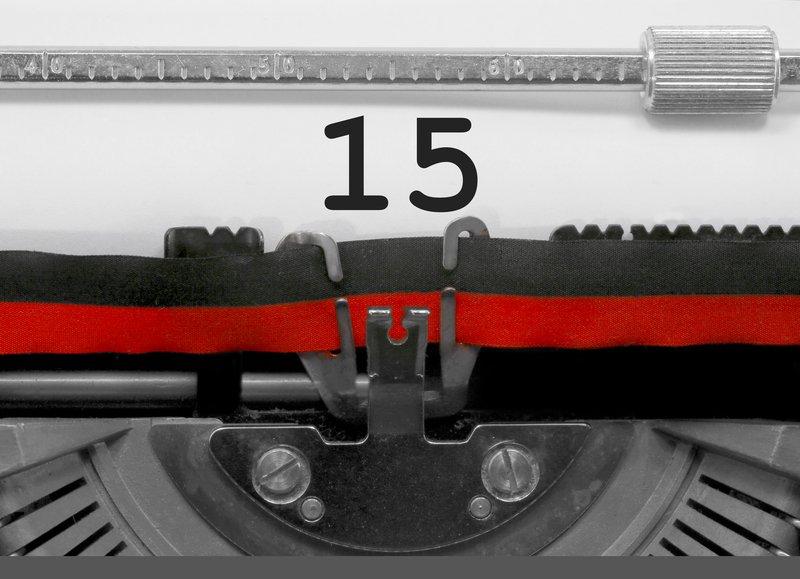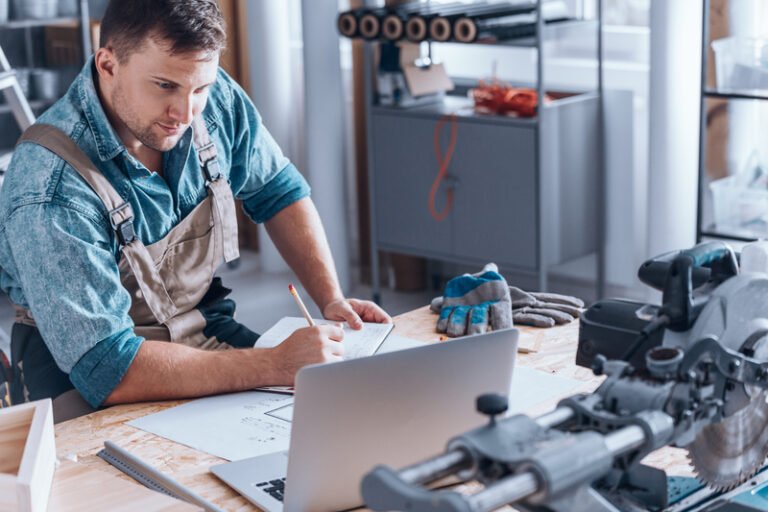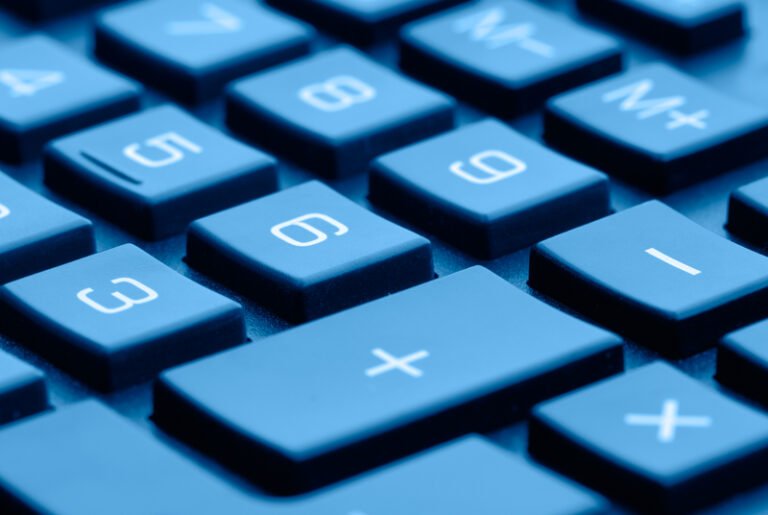Whether you work from home or have premises fitted with expensive equipment, every business has running costs.
As a sole trader, you can deduct many of these costs from your income and pay less tax.
But what counts as a legitimate business expense when you’re a sole trader?
And how do you claim?
What is a business expense?
A business expense is anything you’ve paid for which you need to run your business. There are two main types:
- Revenue expenses
- Capital expenses
As a sole trader, you can claim both. But different rules apply to how you claim, depending on the type of expense.
What are revenue expenses and when can you claim them?
Revenue expenses are expenses related to the day-to-day running of your business. These include software subscriptions, insurance, training, and protective equipment.
For a revenue expense to be allowable — that is, for you to be able to claim it — it must usually satisfy HMRC’s ‘wholly and exclusively’ test:
- Your business is the only reason you incurred the expense
For example, you wouldn’t need accounting software if you didn’t have a business. So your annual subscription satisfies the ‘wholly and exclusively’ test
- The expense has both a private and business use, but you can say exactly how much of it is ‘wholly and exclusively’ for business
For example, you use your car for both private and business trips, but you know you’ve driven 8,000 miles for business reasons and 10,000 miles on personal trips
If you make a business expense ‘wholly and exclusively’ for business, you can usually claim the full amount. That said, some expenses aren’t allowable and can’t be claimed, even though you could argue you’ve made them ‘wholly and exclusively’ for business.
HMRC has a list of the most common disallowable expenses. These include:
- The capital repayment on a loan or overdraft (interest is allowable, so you can claim it)
- The cost of buying and renovating premises
- Entertaining clients (more on this in a second)
If an expense is partly business and partly personal, you can only claim the ‘business proportion’. Which means you’ll need to work out what that is.
If you want to claim business mileage, for instance, you’ll have to track your mileage and distinguish your business drives from your personal drives. Similarly, to claim part of your phone bill, you’ll need to work out what percentage of your usage was business-related.
Free Tide Business Bank Account - £50 Cashback!

Open a free business current account to qualify + enjoy 12 months free transactions. Read our Tide review.
There are two exceptions to this.
You can claim the full amount of an expense if you can show that personal use is ‘incidental’. Typically, this means that personal use is:
- Insignificant, for example only one out of every twenty phone calls you make from your phone is personal
- Subordinate. For example, you wear your protective clothing from home to save time instead of changing on the job
At the other end of the spectrum, you can’t claim a business expense if it’s impossible to separate business use from personal use.
Food is a classic example of this. While a lunch may have a business function — to woo a potential client, for instance — it’s also giving you sustenance. (HMRC does have an exception though. You can claim ‘reasonable’ food and drink costs if you’re away for business overnight).
Simplified business expenses
As a sole trader, you can use HMRC’s simplified expenses instead of working out your actual business costs. These are flat rates set by the government for:
- Mileage costs
- Working from home
- Living at your business premises, for example because you run a bed and breakfast
As the name suggests, the main advantage of using simplified expenses is that working out the business proportion of an expense is simpler and less stressful. Find out which rate applies to you and that’s that.
The flipside is that your actual costs could result in a bigger tax deduction. And if you use simplified expenses for your mileage costs, you won’t be able to claim capital allowances (more on this in a minute).
With this in mind, it’s worth comparing how much you could claim using actual costs as opposed to simplified expenses. HMRC has a calculator you can use to find out what’s best for you.
How to claim revenue expenses
Claiming revenue expenses is fairly straightforward. If your annual turnover is less than £85,000, jot down your total expenses in box 31 of your self assessment tax return.
If your turnover is £85,000 or over, you’ll need to categorise your expenses and complete sections 17 to 46 of your self assessment tax return.
You’ll also need to keep:
- A record of your transactions
- Documentary proof of your expenses. This includes receipts and invoices as well as the workings you used to figure out the ‘business proportion’ of an expense
HMRC doesn’t have a preferred format for your records. You can write out your transactions in a notebook and keep a shoebox of receipts. Or you can record everything in accounting software.
That said, they do require your records to be ‘complete, accurate, and readable’. And you risk getting fined if they don’t meet their standards.
It’s also worth noting that an HMRC audit can go back as far as 20 years if they think you’ve deliberately misled them. So it’s best to hold on to your records for as long as you can.
You’ve been warned.
What are capital expenses and how do you claim them?
You make a capital expense when you buy equipment, machinery, or vehicles which you’ll be using in your business. HMRC doesn’t define exactly what a capital asset is (or what it isn’t), but it’s usually something that:
- You need for your business, such as a laptop or a delivery van
- Is relatively expensive. This depends on your business. There’s no threshold. A piece of equipment costing £100 might be a capital asset if you’re a one-man operation in business for less than a year. But it might be a revenue expense if you’ve dozens of employees and a £1 million turnover
- Will benefit your business in the long term. Again, there are no hard and fast rules. But you’d expect to use a capital asset in your business for at least a year
As a sole trader, you can claim capital expenses in the same way you’d claim revenue expenses if:
- Your annual turnover is less than £150,000
- You use cash basis accounting. This means you record your income on the date you receive it and your expenses on the date they leave your account
If you don’t meet either of these criteria, claiming capital expenses will be a bit more involved. You’ll need to either use your annual investment allowance or work out a writing down allowance.
How to claim capital expenses using your annual investment allowance
The annual investment allowance lets you deduct the full cost of a capital asset on your self assessment tax return as long as:
- You claim the same year you bought the asset. If you don’t claim the same year, you lose the allowance
- The cost doesn’t exceed a certain limit. This is usually £200,000 a year. But in 2020 and 2021, the government temporarily raised the limit to £1 million a year.
How to claim capital expenses using a writing down allowance
A writing down allowance lets you claim capital expenses when:
- Their cost exceeds the annual investment allowance
- The annual investment allowance does not cover them. There are three types of capital expense that aren’t covered:
- Cars
- Equipment you owned before you started your business
- Equipment that’s been gifted to you
With writing down allowances, you work out the item’s value and claim a percentage of the cost each year. You keep going until the item’s value reaches zero.
Here’s how this works:
- Find out the item’s value. This is what you paid for it. Or if it’s something you owned or a gift, its market value
- Place it in one of HMRC’s three pools:
- The main rate pool is the default pool. Everything goes here unless HMRC says otherwise
- Special rate pool. This is for cars that emit 130g/km of CO2 or more, items with a very long life, building insulation, and parts of a building that are considered ‘integral’, such as lifts and heating systems
- Single asset pool. This is for items with a short lifespan or which you also use outside your business (except cars and items that go in the special rate pool)
- Apply the applicable percentage to the item’s value (18% a year for main rate pool items, 8% a year for special rate pool items, and 18% or 8% a year for single asset pools)
- Deduct personal use from your answer
- Apply the deduction every year until you reach zero
In summary
As a rule, you can claim revenue expenses if you’ve made them ‘wholly or exclusively’ for business.
And you can claim capital expenses:
- In the same way as revenue expenses if your turnover is less than £150,000 and you use cash basis accounting
- Alternatively, by using your annual investment allowance or writing down allowances
That said, ‘as a rule’ is the key phrase here.
The rules around what sole traders can and cannot claim as business expenses are fairly complex. There are lots of subtleties and exceptions. And fines to pay if you get things wrong.
With this in mind, it’s important to build a relationship with an accountant you can trust.
They’ll make sure you claim everything you’re entitled to.
And give you the peace of mind that your Is are dotted and Ts crossed should HMRC come knocking at your door.










